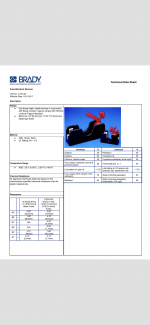JustAGuyInMN
Member
- Location
- Minnesota, USA
- Occupation
- Electrical Engineer
Obviously I have opinions about what I explain here, but I'm looking for others' opinions and ideally code reference to show whether this motor lockout practice meets code / the intent of the code and any other factors anyone might like to mention.
I have experience in a facility where their standard practice is to use the 430.102(B)(2) Exception 2, to not have local disconnects in line of sight of motors. I am trying to get to the bottom of the state and level of detail of their "written safety procedures" so see if I'm satisfied that that framework is in place to even claim that exception, but let's assume that it is for the sake of this post.
The real topic I want to talk about is the location/style of the "disconnects" they are using that aren't in line of sight of the motors, and their practices for using them. Effectively they have 480V UL508A industrial control panels for many motors, which they enter when energized (with appropriate PPE) and open and lock out individual fuses/fuse holders that feed the branch circuit to the motor they want to lock out.
I think most people would agree there are better ways than this, but is there any specific reference that would forbid this from being their practice? There's commentary text in the NEC under the 430.102(B) section that says that breakers inside locked rooms or locked panelboards wouldn't be acceptable but that's not what we have here. If anything these fuses are only "behind" the defeat-device of the industrial control panel disconnect. Also that's just commentary text anyway, so it's not a direct code statement.
I appreciate your input. Thanks.
I have experience in a facility where their standard practice is to use the 430.102(B)(2) Exception 2, to not have local disconnects in line of sight of motors. I am trying to get to the bottom of the state and level of detail of their "written safety procedures" so see if I'm satisfied that that framework is in place to even claim that exception, but let's assume that it is for the sake of this post.
The real topic I want to talk about is the location/style of the "disconnects" they are using that aren't in line of sight of the motors, and their practices for using them. Effectively they have 480V UL508A industrial control panels for many motors, which they enter when energized (with appropriate PPE) and open and lock out individual fuses/fuse holders that feed the branch circuit to the motor they want to lock out.
I think most people would agree there are better ways than this, but is there any specific reference that would forbid this from being their practice? There's commentary text in the NEC under the 430.102(B) section that says that breakers inside locked rooms or locked panelboards wouldn't be acceptable but that's not what we have here. If anything these fuses are only "behind" the defeat-device of the industrial control panel disconnect. Also that's just commentary text anyway, so it's not a direct code statement.
I appreciate your input. Thanks.

